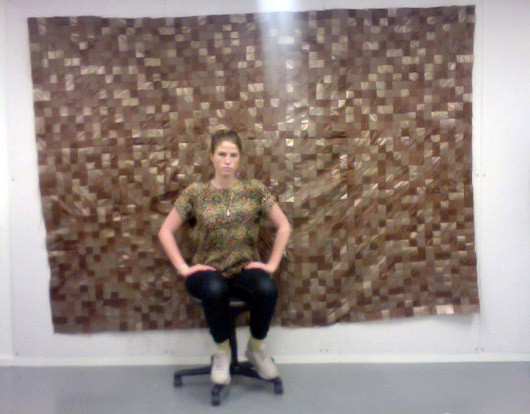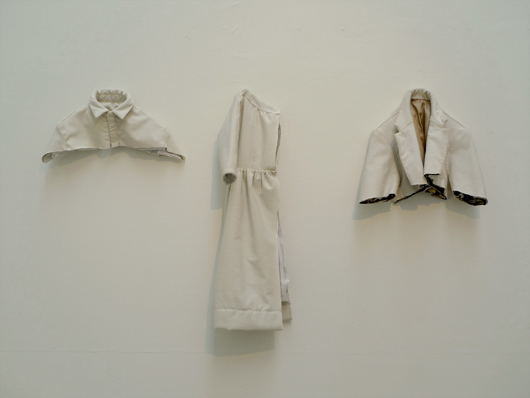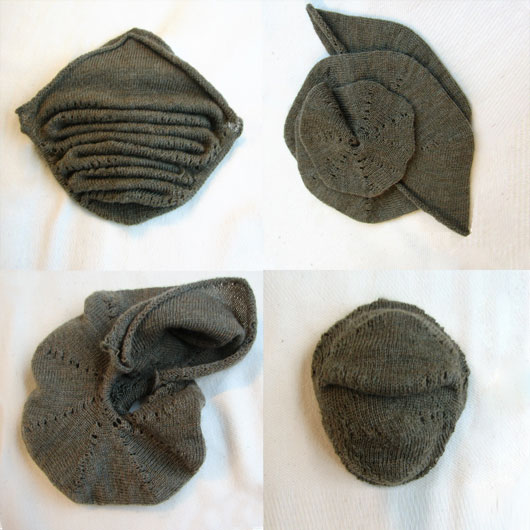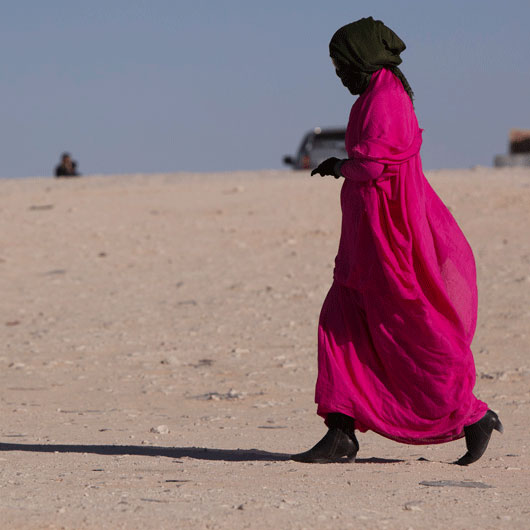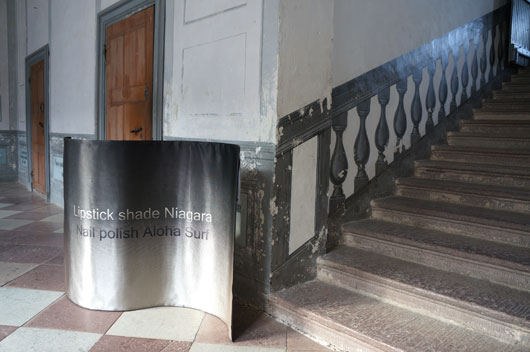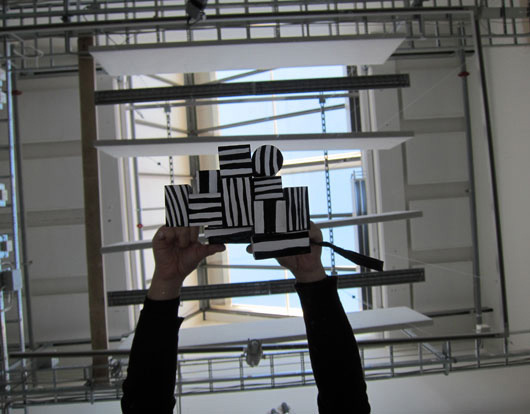Dagmara Stephan
The domain of knowledge about textiles is a language. A language that derives nourishment from all that physical observation of materials entails: their colours and designs, their two and three-dimensionality. At the same time, and often in parallel, it is a language that more than any other can exploit all of its inherent meanings and references, in the materials and in production methods – whether these involve questions linked to gender and power structure perspectives or subjects where we are faced by a phenomenological view of the material.
The eight students in our Master’s group in textiles probe the extended field. During the autumn of 2011 they worked together on the exhibition ”I wait behind the factory gates” at Färgfabriken in Stockholm.
It is stimulating to summarise what we encounter at this year’s degree exhibition, although not an easy task. One common denominator may, however, be ”place”, both physically and as a concept. We move across geographical localities with great extremes. As in Evelina Hedin’s objects whichare located in and interact with the palace at Skokloster and in parallel with the venue and context of the degree exhibition as well. Emma Persson’s project has its point of origin in the refugee camps of West Sahara. Bianca Nabuco takes us to mental places, almost physical conditions, with a series of objects. A world of rhythmic patterns, a concrete although illusory place, is created by Miwa Akabane. Working with time-consuming technique is in itself a way of creating space, a place. It could be possible to link Anna Nordström’s works in patchwork techniques or Dagmara Stephan’s knitted structures through this concept. Aiko Kubo has based her work on an experience of the personal sphere, space or lack of space, in the public arena. And in conclusion Manja Hunger’s objects comprises fabric with references to a specific place and context, at the same time it spurns all interpretation and constitutes a place of its own.
Being able to follow these students in their reflective processes and the development of their areas of knowledge has been an irreplaceable experience.
Inger Bergström, Professor of art, specialising in textiles
Det textila kunskapsområdet är ett språk. Ett språk som får sin näring ur allt det som en fysisk betraktelse av materialet för med sig, dess färg och form, dess två- och tredimensionalitet. Samtidigt och ofta parallellt är det ett språk som mer än andra kan utnyttja alla de inneboende betydelser och referenser som finns där förborgade, i material och i produktionsmetoder. Om det så handlar om frågor kopplade till ett genus- och maktstrukturellt perspektiv eller ämnen där vi möts av en fenomenologisk blick på materialet.
Från mastergruppen Textil i det utvidgade fältet examineras i vår åtta studenter. Hösten 2011 arbetade de gemensamt med utställningen ”I wait behind the factory gates” på Färgfabriken i Stockholm.
Att sammanfatta det vi möter på årets vårutställning är spännande men inte så enkelt. En gemensam nämnare kan dock vara ”plats”, då både som faktisk plats och som begrepp. Vi rör oss över geografiska platser med stora ytterligheter. Såsom i Evelina Hedins objekt som tar plats i och interagerar med Skoklosters slott och parallellt även med vårutställningens kontext. I Emma Perssons arbete är utgångspunkten Västsaharas flyktingläger. Bianca Nabuco tar oss till mentala platser, nästan kroppsliga tillstånd, genom en serie objekt. En rytmisk mönstervärld, en konkret men också illusorisk plats, byggs upp av Miwa Akabane. Utövandet av en tidskrävande teknik är i sig att skapa ett utrymme, en plats. Det kan vara ett sätt att koppla Anna Nordströms arbeten utförda i patchwork-teknik eller Dagmara Stephans stickade formationer till detta begrepp. Aiko Kubo har arbetat utifrån en upplevelse av personlig sfär, plats eller brist på plats, i det offentliga rummet. I Manja Hungers objekt slutligen, ingår tyg med referenser till en specifik plats och kontext, samtidigt vänder de sig bort från allt tolkande och utgör en egen plats.
Att få följa dessa studenter i deras reflekterande processer och utvecklande av kunskapsområdet har varit en oersättlig erfarenhet.
Inger Bergström, professor i konst med inriktning textil

